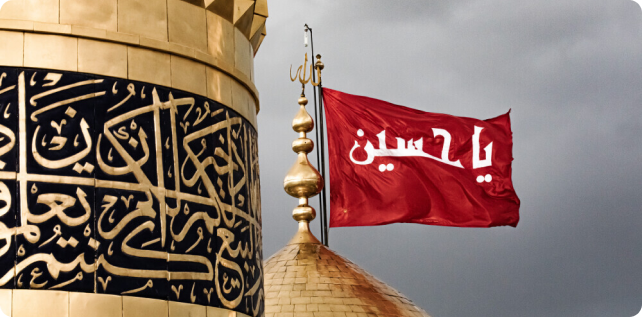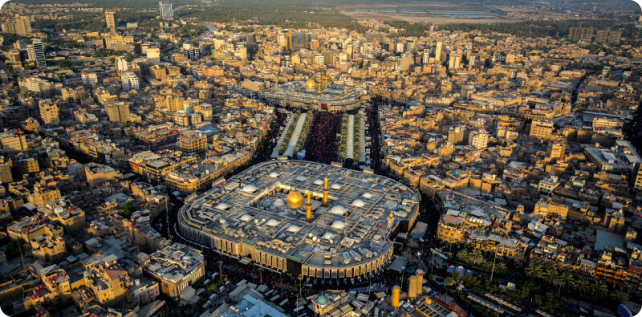ARBAEEN


mission is very well summarised in Ziayrat Arbaeen:
As a young child, Hussain witnessed his grandfather – the Prophet Muhammad (SAW) – strive to establish a morally just society. Prior to the rise of Muhammad (SAW) and the advent of Islam, Arabian society was plagued by tribal feuds and gross inequality. It was in this context that Imam Hussain (AS) developed his principles and, as a young man, was widely respected across the lands for his integrity.
Uniting Humanity through Arbaeen Pilgrimage
Embracing Diversity and Shared Values
By: Mustafa Al-Husseini
In the last two decades, the Arbaeen pilgrimage has emerged as the world's largest annual religious gathering. As its name in Arabic “الأربعين” suggests, it marks the 40th day after the martyrdom of Imam Hussein, the beloved grandson of Prophet Muhammad, Imam Hussein Bin Ali “AS” in the eternal battle of Karbala on 10 October 680 (10 Muharram in the year 61 AH of the Islamic calendar).
This article highlights how a Shia-Muslim pilgrimage in Iraq attracts millions of people from diverse religious backgrounds to the holy city of Karbala. Its remarkable ability to unify individuals from different faiths and cultures emphasizes the pilgrimage's crucial role in promoting interreligious understanding and unity, as well as demonstrating how this event has become a symbol of religious tolerance, empathy, and brotherhood.
A Historical Perspective:
The Arbaeen pilgrimage holds significant historical and cultural perspectives that have shaped its prominence throughout the years. Dating back to the 7th century, it commemorates the martyrdom of Imam Hussein and his loyalists in the Battle of Karbala. This event marked a pivotal moment in Islamic history, highlighting the struggle against injustice, tyranny, and oppression. Over time, the pilgrimage evolved into a powerful act of protest and solidarity, ultimately becoming the largest annual gathering of people worldwide. It symbolizes resistance and resilience, embodying values of justice, sacrifice, and unity that inspire millions each year.
The Inclusive Nature of Arbaeen:
Arbaeen stands out among global pilgrimages due to its inherent inclusivity. Regardless of nationality, ethnicity, gender, or social status, all are welcome to participate. This inclusivity has been observed firsthand by award-winning photojournalist Emily Garthwaite, who documented the pilgrimage in her photo album “The Road to Arbaeen,” illustrating how people from various backgrounds come together to honor Imam Hussein’s legacy.
Renewed Sense of Humanity:
Arbaeen fosters a strong sense of humanitarianism among its participants. “Mawkebs servants” selflessly provide food, water, and shelter to millions of pilgrims, embodying generosity, volunteerism, and compassion. This spirit of unity transcends religious boundaries, as people from all walks of life work together to ensure the comfort and well-being of others.
Arbaeen as a Beacon for Interreligious Dialogue:
The Arbaeen pilgrimage serves as a unique platform for interfaith dialogue, enabling individuals from diverse religious backgrounds to engage, share experiences, and dispel misconceptions. This openness fosters mutual respect and a deeper appreciation for diversity. Dr. Chris Hewer, a British researcher in Christian theology and Islamic studies, exemplified this spirit by engaging in dialogue at a religious school in Karbala, highlighting the event's role in fostering understanding.
The Ripple Effect Beyond Religious Boundaries:
The unity witnessed during Arbaeen transcends religious boundaries, leaving a lasting impact on both participants and observers. It serves as a powerful testament to the potential of religion as a force for peace and harmony. Through social media, participants share their experiences globally, inspiring others and promoting understanding and cooperation worldwide.
Conclusion:
The Arbaeen pilgrimage stands as a testament to the unity of religions, fostering dialogue, understanding, and shared human values. It transcends division and highlights our common aspirations for justice, compassion, and peace. As more people recognize Arbaeen’s role in promoting harmony, it is hoped that similar initiatives worldwide will strengthen the bonds that unite us as a global community.




